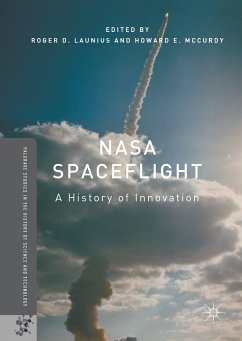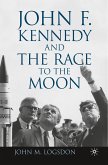This book presents the first comprehensive history of innovation at NASA, bringing together experts in the field to illuminate how public-private and international partnerships have fueled new ways of exploring space since the beginning of space travel itself. Twelve case studies trace the messy, risky history of such partnerships, exploring the role of AT&T in the early development of satellite technology, the connections between the Apollo program and Silicon Valley, the rise of SpaceX, and more. Some of these projects have succeeded, and some have failed; all have challenged conventional methods of doing the public's business in space. Together, these essays offer new insights into how innovation happens, with invaluable lessons for policymakers, investors, economists, and members of the space community.
Dieser Download kann aus rechtlichen Gründen nur mit Rechnungsadresse in A, B, BG, CY, CZ, D, DK, EW, E, FIN, F, GR, HR, H, IRL, I, LT, L, LR, M, NL, PL, P, R, S, SLO, SK ausgeliefert werden.









